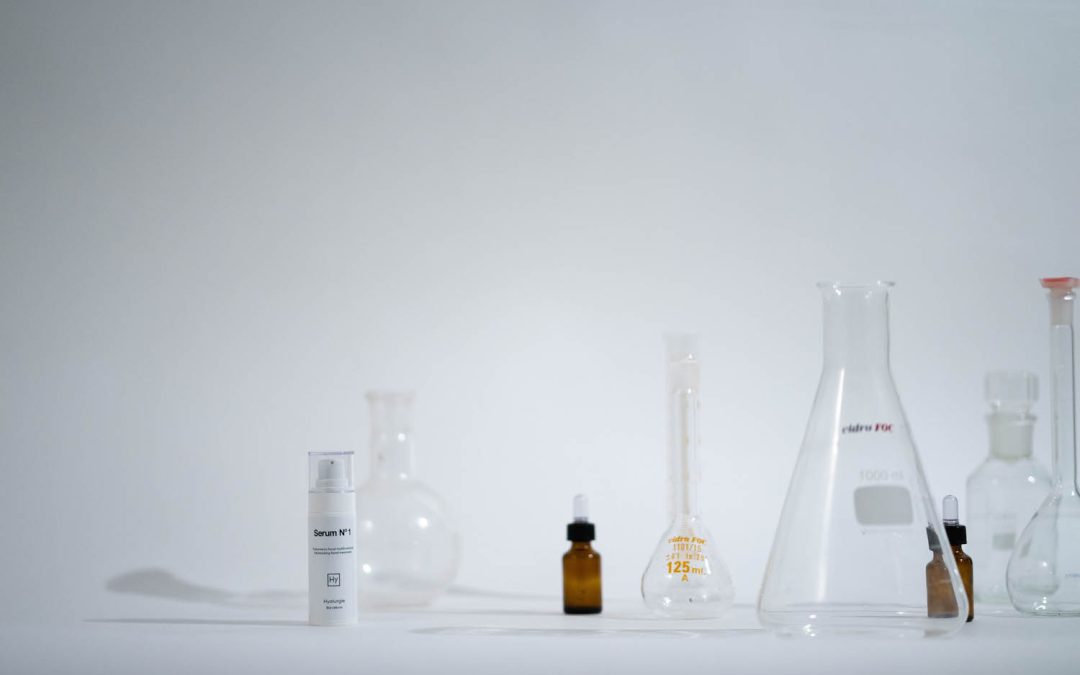If you want to know why it is my favorite molecule
read on
It is the best active I have tried so far, for its versatility, effectiveness and compatibility with all skin types and ages.
No matter how many studies and explanations are given, you have to try it to experience how radiant and soft your skin becomes shortly after using it.
I will try to provide new information that is difficult to find or explain on the internet or social networks, both from the technical point of view, as a buyer of raw materials and as a formulator of cosmetics and as a user of the final product. All photos are my originals from actual laboratory tests.
HISTORY AND PROPERTIES
It is a polysaccharide of the glycosaminoglycan type, found in human tissues, mainly in the skin (50%).
In a person weighing 70 kilograms there may be a quantity of 15 grams of hyaluronic acid in the body, of which 5 grams are renewed every day.
As we age, the amount is considerably reduced, from the age of 50 onwards, the amount is reduced to half that of a young person between 20 and 45 years of age.
A curiosity: it was discovered in 1934, in the vitreous humor of a cow’s eye. The first in vitro synthesis was in 1964.
If you want to know where the natural origin comes from, ask me 😉
It is a natural moisturizer, that is, it attracts and retains water like a sponge: it absorbs up to 1000 times its weight in water.
1 gram of hyaluronic acid retains 1 liter of water.
Although for its many other benefits. is much more powerful than other traditional humectants (such as glycerin). Naturally, its price is in line with these incredible properties.
- It literally plumps and smoothes wrinkles, maintains skin elasticity, helping skin look healthy and rejuvenated.
- It also has longer-term effects by restoring the skin’s barrier function and retexturizing and smoothing the outermost layer of the epidermis.
- It is a key ingredient in the process of re-epithelialization, repair and hydration of the skin.
- Reduces skin inflammatory response
- Free radical scavenging
- Provides a physical barrier effect against germs and other external aggressions
- Supports cellular and collagen regeneration
- Helps penetration of water-soluble actives into deeper layers of the skin
- accelerates healing and maintains water balance
- Low molecular weight hyaluronic acid can help skin repair. A study showed that at 0.2% (molecular weight of 200kDa) it increases skin defense. Other studies report improvement in inflammatory skin problems such as rosacea or seborrheic dermatitis.
Hydration increases by 15% in only 30 minutes, and remains up to 8 hours (at 0.1% concentration).
BENEFITS
Manufacturers report in vitro and in vivo studies, in addition to the many studies on the subject, some examples of which are cited in the literature:
Benefits of hyaluronic acid from higher to lower molecular weight
MOLECULAR WEIGHTS AND FORMS OF USE
Molecular weights
The cosmetic grades are of high purity, obtained by biotechnological processes of fermentation of microorganisms in a culture medium.
Molecular weights in cosmetic applications range from 5-10kDa to 1800KDa.
Blends of different molecular weights
The best efficacy is achieved by mixing different molecular weights to achieve synergy between them, with combined short and long term benefits and through the different layers of the skin.
There are several options on the market for blends already formulated by manufacturers. I have tried quite a few options and none have been particularly satisfactory. Therefore, for my serum line I chose to formulate my own combination of molecular weights in different percentages to achieve extraordinary visible efficacy in a very short time.
CHEMICAL FORM AND INCI
Hyaluronic acid as such is an unstable molecule and is therefore used in sodium salt form:
The two most common INCIS are
- Sodium hyaluronate is the usual form, with molecular weights from 500kDa to 1800kDa.
- Sodium Hyaluronate Hydrolyzed from 5kDa to approximately 300kDa
Hyaluronic acids of various molecular weights
How it acts on the skin
Fragments weighing less than 300 kDa can penetrate the skin, and those weighing less than 150-200 kDa can penetrate to the dermal level:

